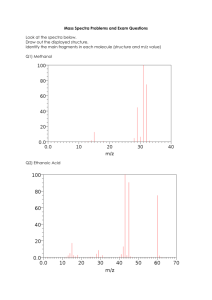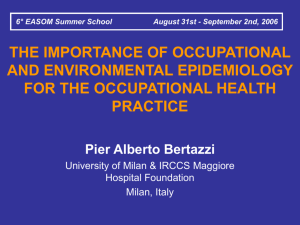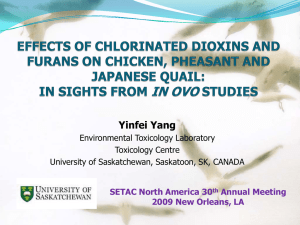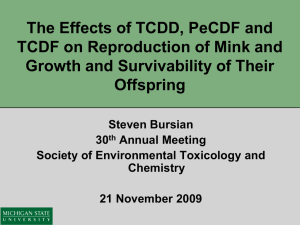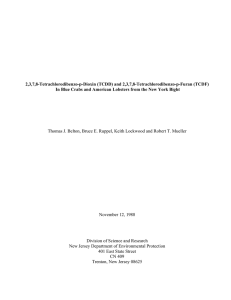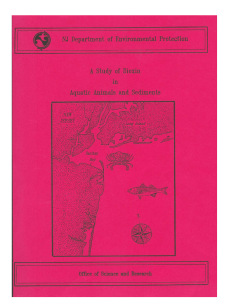Photo-transformation of 2,3,7,8-TCDD in presence of in vitro P. Macíková
advertisement
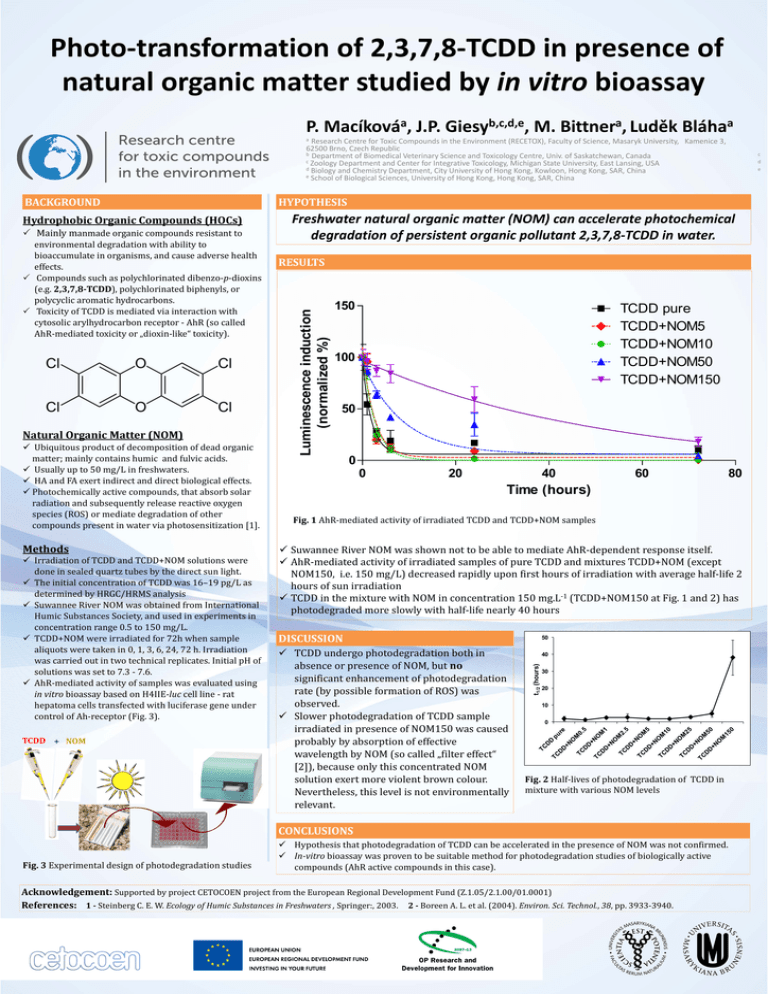
Photo-transformation of 2,3,7,8-TCDD in presence of natural organic matter studied by in vitro bioassay P. a Macíková , J.P. b,c,d,e Giesy , M. a Bittner , Luděk a Bláha Research Centre for Toxic Compounds in the Environment (RECETOX), Faculty of Science, Masaryk University, Kamenice 3, 62500 Brno, Czech Republic b Department of Biomedical Veterinary Science and Toxicology Centre, Univ. of Saskatchewan, Canada c Zoology Department and Center for Integrative Toxicology, Michigan State University, East Lansing, USA d Biology and Chemistry Department, City University of Hong Kong, Kowloon, Hong Kong, SAR, China e School of Biological Sciences, University of Hong Kong, Hong Kong, SAR, China a Mainly manmade organic compounds resistant to environmental degradation with ability to bioaccumulate in organisms, and cause adverse health effects. Compounds such as polychlorinated dibenzo-p-dioxins (e.g. 2,3,7,8-TCDD), polychlorinated biphenyls, or polycyclic aromatic hydrocarbons. Toxicity of TCDD is mediated via interaction with cytosolic arylhydrocarbon receptor - AhR (so called AhR-mediated toxicity or „dioxin-like“ toxicity). Natural Organic Matter (NOM) Ubiquitous product of decomposition of dead organic matter; mainly contains humic and fulvic acids. Usually up to 50 mg/L in freshwaters. HA and FA exert indirect and direct biological effects. Photochemically active compounds, that absorb solar radiation and subsequently release reactive oxygen species (ROS) or mediate degradation of other compounds present in water via photosensitization [1]. Methods Irradiation of TCDD and TCDD+NOM solutions were done in sealed quartz tubes by the direct sun light. The initial concentration of TCDD was 16–19 pg/L as determined by HRGC/HRMS analysis Suwannee River NOM was obtained from International Humic Substances Society, and used in experiments in concentration range 0.5 to 150 mg/L. TCDD+NOM were irradiated for 72h when sample aliquots were taken in 0, 1, 3, 6, 24, 72 h. Irradiation was carried out in two technical replicates. Initial pH of solutions was set to 7.3 - 7.6. AhR-mediated activity of samples was evaluated using in vitro bioassay based on H4IIE-luc cell line - rat hepatoma cells transfected with luciferase gene under control of Ah-receptor (Fig. 3). TCDD + NOM Freshwater natural organic matter (NOM) can accelerate photochemical degradation of persistent organic pollutant 2,3,7,8-TCDD in water. RESULTS 150 TCDD pure TCDD+NOM5 TCDD+NOM10 TCDD+NOM50 TCDD+NOM150 100 50 0 0 40 20 60 Fig. 1 AhR-mediated activity of irradiated TCDD and TCDD+NOM samples Suwannee River NOM was shown not to be able to mediate AhR-dependent response itself. AhR-mediated activity of irradiated samples of pure TCDD and mixtures TCDD+NOM (except NOM150, i.e. 150 mg/L) decreased rapidly upon first hours of irradiation with average half-life 2 hours of sun irradiation TCDD in the mixture with NOM in concentration 150 mg.L-1 (TCDD+NOM150 at Fig. 1 and 2) has photodegraded more slowly with half-life nearly 40 hours DISCUSSION TCDD undergo photodegradation both in absence or presence of NOM, but no significant enhancement of photodegradation rate (by possible formation of ROS) was observed. Slower photodegradation of TCDD sample irradiated in presence of NOM150 was caused probably by absorption of effective wavelength by NOM (so called „filter effect“ [2]), because only this concentrated NOM solution exert more violent brown colour. Nevertheless, this level is not environmentally relevant. 50 40 30 20 10 0 Fig. 2 Half-lives of photodegradation of TCDD in mixture with various NOM levels CONCLUSIONS Fig. 3 Experimental design of photodegradation studies 80 Time (hours) t1/2 (hours) Hydrophobic Organic Compounds (HOCs) HYPOTHESIS Luminescence induction (normalized %) BACKGROUND c d e Hypothesis that photodegradation of TCDD can be accelerated in the presence of NOM was not confirmed. In-vitro bioassay was proven to be suitable method for photodegradation studies of biologically active compounds (AhR active compounds in this case). Acknowledgement: Supported by project CETOCOEN project from the European Regional Development Fund (Z.1.05/2.1.00/01.0001) References: 1 - Steinberg C. E. W. Ecology of Humic Substances in Freshwaters , Springer:, 2003. 2 - Boreen A. L. et al. (2004). Environ. Sci. Technol., 38, pp. 3933-3940.

